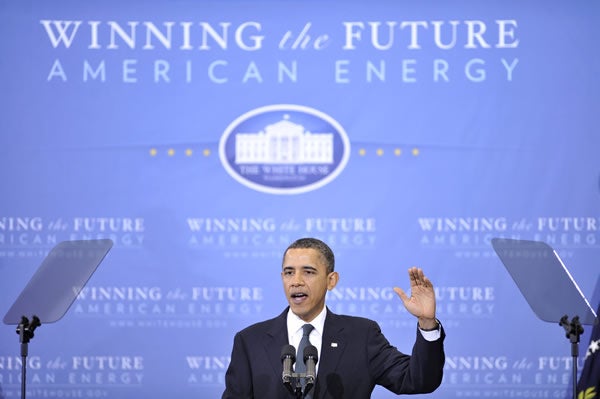Obama’s All-of-the-above Energy Plan: Same Slogan, Different Version
Nicolas Loris /
Both Republicans and Democrats love the “all-of-the-above” slogan, because they can make it mean pretty much anything they want. Democrats use it to support pet projects in their districts. Republicans do the same. Too often politicians use this popular motto when discussing energy policy, and too often they use it to mean subsidizing everything. The federal government needs to remove the subsidies and burdensome regulations for all energy sources and technologies and allow the market to do its thing. The reality is we have a variety of domestic energy resources (nuclear, energy, oil, coal, natural gas, wind, solar, hydroelectric and biofuels). The energy market can be diverse and competitive without government interference. If these sources of energy can’t stand on their own two feet, they are likely not ready to be part of our energy mix.
Unfortunately, President Obama is continuing the status quo with the definition of all-of-the-above being synonymous to subsidies. Obama says he supports an energy policy where all sources have a slice of the pie, but his policies and rhetoric make it clear he wants the renewable slices bigger and the fossil fuel ones smaller.
For instance, President Obama’s idea of including coal in “all-of-the-above” is to drive out coal production, while simultaneously subsidizing a handful of plants with carbon capture and sequestration (CCS). In March, the Environmental Protection Agency (EPA) proposed new source performance standards for carbon dioxide emissions that directly target coal; natural gas plants already meet the standard.
At present, CCS is an economic pipedream and even President Obama’s goal of subsidizing CCS to make it commercially viable in a decade is ambitious. That plan will only result in more wasted taxpayer dollars in an attempt to commercialize an unnecessary technology that won’t provide measurable changes in the earth’s temperature. The CO2 rule is just one of a host of administrative regulations (Utility MACT, coal ash, stream buffer zone, cross state air pollution to name a few) that are forcing existing plants to prematurely close, prohibiting the construction of new plants and making it more difficult to mine for coal. Obama’s policies are also going to drive up energy costs for American households and businesses.
The same holds true with the president’s supposed support for oil production. President Obama consistently touts the fact that domestic oil production is the highest it has been in eight years. While this is a positive development for America, production has not increased as a result of the president’s policies—rather in spite of them. If Obama were sincerely interested in increasing oil production, his administration would have approved the Keystone XL Pipeline, opened areas onshore and offshore, issued drilling permits and lease sales on time and required a timely environmental review process. He also wouldn’t have called for oil companies to pay their “fair share” by eliminating what he calls special loopholes and subsidies for oil and gas companies. The fact is they are not specific to the oil and gas industry, but are widely available to the broader manufacturing sector.
While President Obama wants to shrink the use of fossil fuels, he wants to use subsidies and mandates to increase the share of renewable energy. The commander-in-chief continues to push for doubling down on renewable energy subsidies despite the fact that subsidizing uneconomical technologies is wasteful and an economic drain. Not to mention it promotes crony capitalism and dependence on government. His past two State of the Union addresses called for mandating a clean energy standard (CES) that would require electricity producers to sell carbon-free energy. Proponents of a CES have touted the plan as a market-based approach, but if it were truly market-based, producers wouldn’t need the mandate. They would rely on price and competition.
My colleague David Kreutzer sums up President Obama’s version of all-of-the-above most appropriately:
Which energy policy is best?
a. Subsidize solar energy, wind energy, biofuels and energy-efficient technologies.
b. Mandate the consumption of solar energy, wind energy, biofuels and energy-efficient technologies.
c. All of the above
d. Allow markets to produce petroleum, natural gas, coal and other sources of energy at affordable prices.
This post originally appeared on National Journal’s “Energy Experts Blog”

